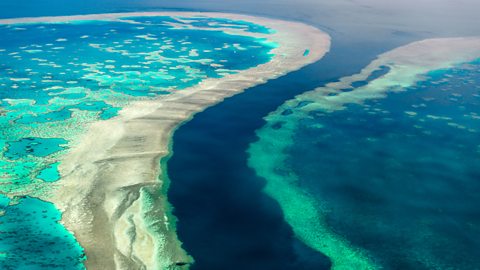How is climate change affecting our environment?
Climate change and tropical coral reefs
Australia is a vast country where the impacts of climate change are extensive. One of the most vulnerable ecosystems in Australia is the Great Barrier Reef. This tropical reef ecosystem is located in the north-east of Australia, and it is now affected by a disease known as coral bleaching. This condition occurs when the temperature of the seawater rises by over one degree more than average. As a result, the coral turns white, photosynthesis ceases and the coral often dies due to disease.

Climate change and the UK
The UK has also experienced many problems as a direct result of global warming:
- extreme weather events
- increased flood risk
- extinction of highland plants
- species invasion
Short and long term impacts
Social impacts
Many people in coastal communities are at risk from flooding. Whole villages may need to be abandoned due to sea levels rising and coastal erosion.
Environmental impacts
A higher risk of extreme storms will flood areas, destroying the land. Species of animals and plants may be lost as they move northwards in search of colder climates. New invasive species from the south may also find their way to the British shores which may have a negative impact on local habitats.
Alternative futures
In the future it is likely that people may have to contribute more in taxes in order to pay for the increased flood defences and the extra вҖҳstrainвҖҷ on the health services. Many of the most vulnerable coastal communities may be abandoned with people needing to find new houses. Increased insurance premiums will also result in some people being unable to afford to protect their homes. Farming businesses may also need to change or adapt to new wetter and drier periods вҖ“ some will prosper but many may suffer.